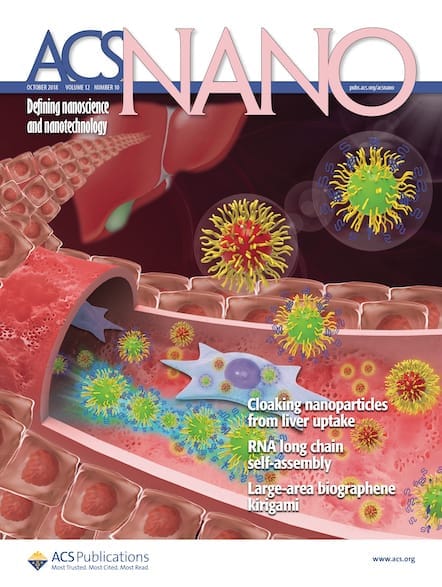Chemical & Engineering News covers the world of chemistry, from research and education to business and policy. Here’s a sampling of their coverage of research from ACS journals: *** Sea Life Untainted by Wrecked WWII Submarine’s Mercury Leak Researchers say metallic mercury leaking from a World War II German submarine wreck has polluted ocean floor […]

Chemical & Engineering News covers the world of chemistry, from research and education to business and policy. Here’s a sampling of their coverage of research from ACS journals:
***
Sea Life Untainted by Wrecked WWII Submarine’s Mercury Leak
Researchers say metallic mercury leaking from a World War II German submarine wreck has polluted ocean floor sediment near the Norwegian island of Fedje. Fortunately, an analysis of crabs in the area suggests the mercury has not had a large effect on the local food web, even though sediment samples showed mercury levels as high as 24,000 mg/kg. The researchers theorize a lack of organic matter in the sediment keeps bacteria from methylating the mercury, limiting the element’s bioavailability.
- Read the story in C&EN.
- Read the research in Environmental Science & Technology.
***
Strengthening Silk With Nanomaterials
Silkworms fed graphene or carbon nanotubes produce silk fibers that are twice as tough, can withstand about 50% more stress, and can even conduct electricity, a study finds. The worms were fed their usual diet of mulberry leaves with a twist: The leaves were coated in a 0.2% aqueous solution of graphene or single-walled carbon nanotubes. While there are other methods for treating silk with nanomaterials, this method is less complex and environmentally destructive, researchers note.
- Read the story in C&EN.
- Read the research in Nano Letters
***
New Nanobot Design Could Offer Targeted Intestinal Drug Delivery
Self-driven nanobots could someday provide targeted medicine or medical imaging to patients by traveling to specified points in their intestines. In tests, devices were delivered to specific parts of the intestine by varying the thickness of a pH-sensitive methacrylate-based polymer coating, which slowly dissolves in the neutral pH environment of the intestine. Once the coating dissolves entirely, a reaction occurs that embeds the device in the subject’s intestinal wall, where medicine can be deployed. Researchers plan to conduct further experiments to study the device’s effectiveness in targeted drug delivery in mice.
- Read the story in C&EN.
- Read the research in ACS Nano.
***
New Biomarker Panel Test Improves Detection of Liver Damage
An improved blood test for acetaminophen-induced liver injury looks solely at proteins expressed at high levels in the liver, removing the ambiguity of tests that relied on biomarkers expressed throughout the body. In a trial, researchers found that a test for a panel of five liver-enriched proteins was able to detect 12 out of 14 sick patients, compared with just 3 spotted by the standard test. While evaluation of the method is needed, researchers say this approach could someday lead to new tests for a variety of organ-specific conditions.
- Read the story in C&EN.
- Read the research in Journal of Proteome Research.
***
Study Explores Formation of Carbon Nanotubes in Diesel Exhaust
Burning diesel fuel with sulfur and ferrocene, a common fuel additive, promotes the creation of carbon nanotubes in exhaust fumes. Inhaling nanotubes has been tied to cancer and lung disease in tests on rats and mice. While particulate exhaust filters typically remove carbon nanotubes from engine exhaust, researchers say the nanotubes may still pose a risk in countries with less stringent emission limits and fuel mixtures that include more sulfur and additives.
- Read the story in C&EN.
- Read the research in Environmental Science & Technology Letters.
***
That’s just a small sample of the robust coverage C&EN provides. Get the latest news in your discipline with weekly e-mail updates.
